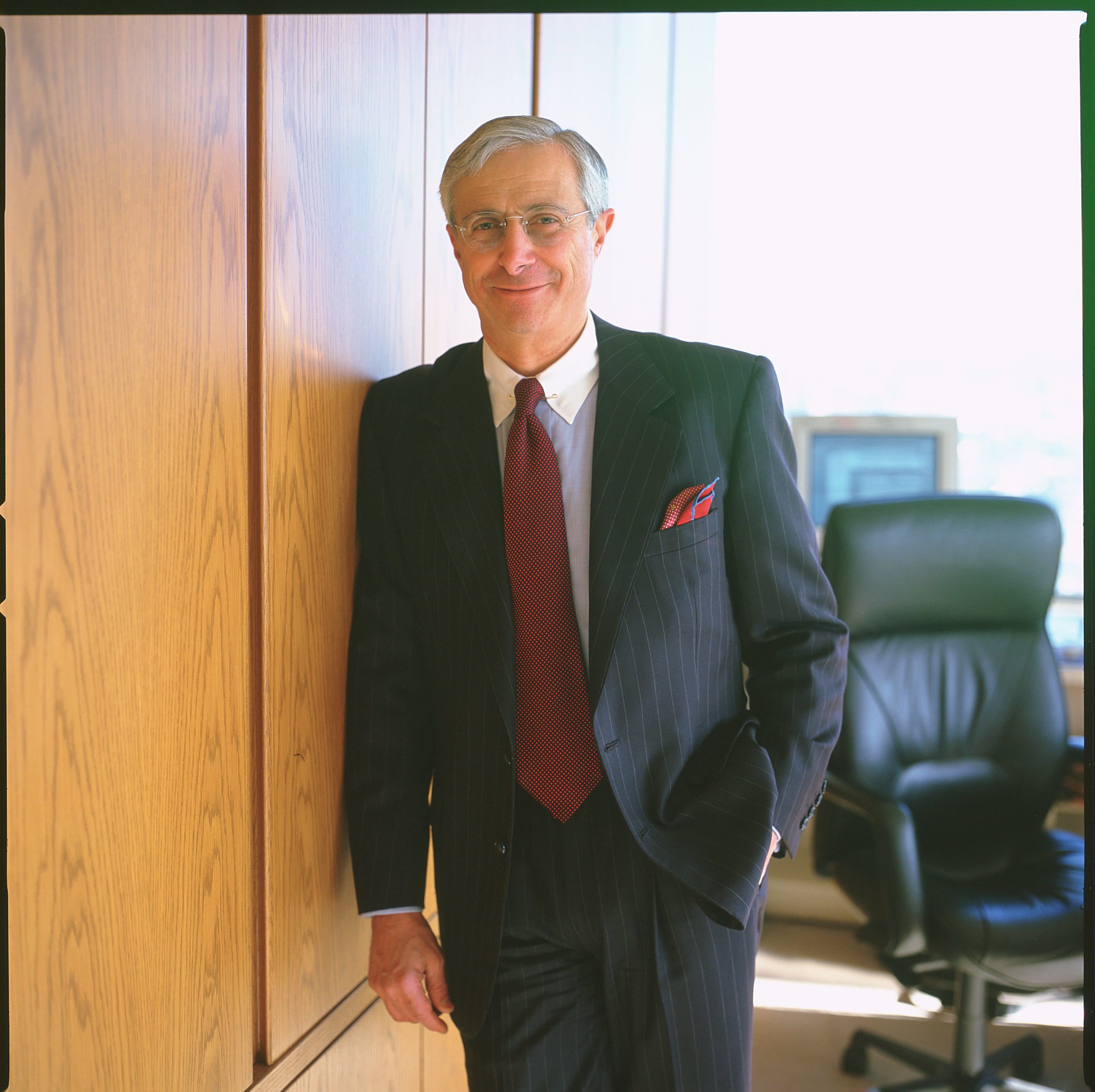Although Peter Allan Atkins ’68 dismisses “star” labels, preferring to be viewed as an all-around corporate lawyer, the Skadden, Arps, Slate, Meagher & Flom partner is nationally acclaimed as a mergers and acquisitions expert. His clients include Warner-Lambert, Bell Atlantic, Honeywell International, Gucci, U.S. Airways, Kmart, and many other industry leaders. His landmark deals include the $25 billion leveraged buyout of RJR Nabisco, Inc., Time Inc.’s $12 billion acquisition of Warner Communications, the pending $129 billion business combination between Sprint Communications and MCI Worldcom, and the pending $70 billion joint venture between Bell Atlantic and Vodafone AirTouch.
Yet when Atkins arrived at Harvard Law School in 1965, he had only a vague interest in the law. At first the Brooklyn, N.Y., native was daunted by the rigors of 1L life. “I lived in Story Hall, surrounded by friendly but unremittingly intense law students,” he says, recalling the happy occasion when a power outage halted all studying in the dorms. “A few guitars came out, and people finally relaxed.”
By his 2L year, Atkins had found sure footing and a plan for his future. “What excited me was the prospect of becoming a business law practitioner.” After graduation, he had “the incredible good fortune to join a little New York firm called Skadden Arps.” He became the 19th attorney in the firm, which now numbers 1,400. Today he chairs the client committee and is a member of the policy committee.
Since the mid-1970s, Atkins has been involved in every phase of M & A practice. In one early deal, he worked round-the-clock to help fend off a hostile exchange offer for client Mead Corporation by Occidental Petroleum. In the ’80s the cash-tender offer dominated, and he represented targets, bidders, and investment banks. When the leveraged buyout ruled in the late ’80s, Atkins worked on the most dramatic of all, the LBO of RJR Nabisco. In the ’90s, he emerged as a leader of the latest trend: stock-for-stock mergers of enterprises pursuing strategic business combinations—a topic he analyzed for the National Law Journal. He has been involved in transactions of this type in a range of industries, including biotechnology, pharmaceutical, telecommunications, electric and gas utility, and technology and controls.
As exciting as the huge deals are, equally challenging, Atkins says, was his early work representing acquirers of small closely held companies in privately negotiated acquisitions in which “everything was on the line: succession, family, a life’s work.” He acquired broad-based experience that enables him to counsel clients today on a host of non-M & A matters—from corporate governance to crisis management to emerging business opportunities.
“I feel privileged to work hard at something I really enjoy,” says Atkins, who also dedicates as much time as possible to his service as a board member of A Better Chance, a national organization that assists minority students in gaining entry to top college-preparatory schools.
The once-diffident law student has become one of the School’s most dedicated advocates. Atkins chaired the fundraising committee for his class’s 30th Reunion. Following his lead, one of his two daughters also attended HLS and works in Atlantic Records’ legal department. (“I’m jealous because her duties include going to rock concerts,” says her guitar-playing dad.)
A member of the Dean’s Advisory Board, Atkins praises Dean Robert Clark’s vision and leadership in examining “where the future lies in the law,” from new technologies to international arenas, and in training law students as effectively as possible to take advantage of emerging opportunities. “The Law School is an important part of my history,” he says. “I found my way at the School, and I’d like to help others do the same.”
